Getting Into Solo Wargaming – Part Two
January 14, 2019 by crew
Firstly, I should clarify why the focus of this article is on solo wargaming as opposed to other types of gaming. First and foremost, it is what I am most familiar with, and thus it is where I have applied the greatest amount of consideration.
Check Out @evilstu's Entire Article Series Here
Additionally, of the broad classes of games (wargame, board game, card game, role-playing game – very broad brushstrokes here I know…) I feel it is probably the least intuitive of the categories but the one where the most potential value could be found.
Older games that rely on less elaborate mechanics than their modern-day counterparts may provide an easy starting point for solo gaming
I will touch on the other three areas below...
Solo Card Games
Unless the game has been built from the ground up to handle solo play I can’t personally determine how solo card gaming would be particularly practical. Deck builders like Star Realms are outrageously good fun to play, but playing a game with two faceless galactic overlords competing against one another in a solo gaming manner would not capture the same excitement as playing against another opponent.
I suspect if a card game with a strong narrative, storytelling element was floating around that I haven’t yet had exposure to then that may work as a solo game? I have been racking my brain for months trying to come up with a way for solo card gaming to work and have regrettably fallen short – if anyone in the community has any ideas please do share your thoughts in the comments below (The Lord Of The Rings: The Living Card Game! - Editor).
Solo Board Games
I can think of two ways in which board games could work for solo wargaming, aside from those designed for solo gameplay. Firstly, any game with a cooperative focus where the players would ordinarily compete against the game’s in-built AI system could easily be played in solo mode, simply by controlling all the characters in turn. The Zombicide series of games are a good example of this. Secondly, any competitive game with a strong narrative element (sensing a theme here yet?) would be well suited to solo gaming.
The Zombicide series and other similar cooperative board game experiences can be played solo straight out of the box
Let us compare two board games, Splendor and Talisman, from a solo gaming perspective. I personally find Splendour to be the more enjoyable game, but it would make a poor solo experience given the game's mechanics are set around the need to outthink your opponent. Talisman, being a much older game, is based on random die rolls and cards. It is probably showing its age now but the idea of setting up opposing heroes who are competing to gain possession of the talisman and slinging dice for a few hours I feel could work as a solo gameplay experience. The random probability mechanics and narrative element make it a more appropriate game for solo gameplay than the more elegantly designed Splendour.
Solo Role-Playing Games
The main issue with solo role-playing games is that it immediately removes many of the elements that make the game style work so well, that being shared problem solving, dialogue and character interactions. Essentially a solo role-playing game experience can work, but it involves stripping away many of the thematic and enjoyable elements of the gaming genre and essentially playing the game as a pure ‘dungeon hack’ style of game. This, however, could still prove to be fun and enjoyable.
Let’s consider the Dungeons and Dragons role-playing game, as it is likely the one most readers are likely to be at least vaguely acquainted with. If I to go about attempting a solo dungeon delve using the Dungeons and Dragons rules set, I would approach it as follows. Firstly, generate a character (or potentially a party of characters). Secondly, log on to a random dungeon generator site on the internet and produce a random dungeon. Work through each room, in turn, using the random dungeon and making passive trap detection and search checks by default until all the monsters encountered were dead and the dungeon cleared, or my character had expired or retreated.
Alternatively, you could use graph paper (or card tiles or dungeon terrain if you own them) and randomly map out a dungeon one room at a time using a die to decide which room or corridor you were confronted with, and the challenge rating appropriate random trap and encounter tables from the Dungeon Masters Guide and Monster Manual respectively. The 3.5 edition Monsters Manual even contained suggested default unit activations for monster types to assist the DM which would help in guiding the actions of the dungeon's inhabitants when encountered.
It is, however, the wargame where I believe the best opportunity lies for solo gameplay experience. The narrative element, combined with rules sets which are less constraining than a carefully crafted stand-alone board game, but less open-ended than an imagination-inspiring role-playing game environment seem to my mind to strike the right balance required to make solo gameplay feasible.
Playing The Solo Wargame
Ok, so how does this actually work in practice? You have your rules set of choice, a gaming table all set up and a couple of forces worth of miniatures all assembled and painted, so what’s next? It’s not too different from a usual game, to be honest. Essentially, solo wargaming involves taking command of each general/warlord/faction commander in turn and asking yourself what would they do with the resources that they have on hand and the information that they have presently available. That is, while you may know that the opposing force has an artillery battery screened behind the forested ridge, the general who is presently considering ordering their infantry to march across the field ahead, exposing their flank to enfilading fire, may very well be ignorant of their presence.
Each turn, look at where the army is located, consider what the objectives of the general may be and determine how they would likely seek to go about meeting those objectives. Once that turn or action is complete, repeat the process from the other side, ignoring any information that the first general may have had to hand and considering only the information available to the new general. Repeat the process each turn until you have reached the conclusion of the game.
This idea might seem quite familiar to those of you who regularly play role-playing games. It’s not a case of ‘what would you do?’ but a question of ‘what would your character do in that situation?’.
Of course, rather than having the two opposing forces act out a predetermined script, there are mechanisms which can be employed to introduce random elements, beyond the usual card or dice mechanics already incorporated into your rules set of choice, to make things more interesting. A few ideas of elements that could be incorporated are touched on below.
Deployment Options
There are a few options for handling deployment of armies on the tabletop. You could always follow the standard methodology for the rules set which you are using, but for solo wargaming, the below options might add a layer of interest.
Randomised Deployment
Each unit in the army is assigned a card from a standard deck of playing cards. The cards are then shuffled and placed face down in the deployment zone. The same process is repeated for the opposing force. Once both sets of cards are down, they are turned over in place to reveal their face value and are then replaced with the assigned unit. While this creates deployment patterns which eliminate any possibility that you might have some degree of bias towards a particular side, the random nature of the deployment is unrealistic and is likely to lead to suboptimal deployment on both sides. However, such a technique might be appropriate if two armies were on the march and accidentally happened into one another, representing the chaos as both armies quickly try to form a battle line.
Randomised Deployment Orders
This differs from the above in that you would need to consider the type of army the general is fielding, and then several types of standard deployment formation that would suit that army. Some examples of standardised deployment patterns could include the following...
- Strong centre
- Refused flank (left)
- Refused flank (right)
- ‘Castle’ formation
- Gun line
- Oblique attack (left)
- Oblique attack (right)
Please note that the above list is not intended to be exhaustive, and the potential or likely deployment options may be modified by the army being fielded, scenario objectives, the likely opposition and the terrain setup on the gaming board. Once you have a list of potential deployment strategies for each army, simply roll a die or some similar method to randomly determine which one each general follows.
Randomised Deployment Points
This one works well when there is an attacker/defender type situation. Firstly, set up the defender’s army in full in their designated deployment zone. Next, place markers on the tabletop for the possible points at which the opposing force may arrive. Then, roll a die or use some other randomised mechanic to determine from which point the opposition are deployed at.
Defenders deploy within the town walls, attacking units deploy at Red 1 to 6, defending reinforcements arrive via Blue 1 or 2
If the attacking force is of a less coherent nature then it might be appropriate to break the army into smaller forces and have elements arrive from multiple locations. It may even be appropriate to have each unit in the army check to see which deployment point it arrives at, potentially creating bottlenecks or spreading the attacking forces thin.
Delayed Deployment
With this option, the armies total force is not deployed initially. An element is held in reserve or is yet to arrive to reinforce the army. A check is made each round to see if the reinforcing component can be brought on in that turn. An appropriate check might be that at the start of turn three, the reinforcing element can be brought on on a die roll of a five or a six. If the force has not arrived by turn five then the chance each turn might increase to arriving on a die roll of three to six, with the force automatically being able to be deployed on turn seven.
Of course, this would need to be adjusted to suit the length of the game which you are playing. As an alternative, you could have the reinforcing element arrive at a predetermined time following an in-game event – ‘the cavalry will appear at the south road three turns after the signal fire is lit’, ‘paratroopers will land 1d6 turns after the spotlight is activated’ or ‘It will take five rounds of striking the ceremonial gong before the ice dragon is roused from its slumber’. This could further be combined with a random deployment point as in the above example.
Deployment 'With A Plan'
Giving consideration to the strengths and objectives of each army, they are set up in their respective table areas with reference to a preformulated strategy, disregarding the specific deployment of the opposing force. That is, units for each army are placed in accordance with a predetermined strategy, without varying the deployment to accommodate the strengths and weaknesses of the opposing force.
Attacker Vs Defenders
The defender's force is deployed in full in their deployment zone. The attacking side is then deployed with reference to the defender's positions, strengths and weaknesses, as though the defender's position had been thoroughly scouted prior to the commencement of the engagement.
Objectives In Solo Wargaming
While most wargames do include various scenarios and objectives in their rulebooks, in my experience players tend to default to simply trying to drive the opposing force from the tabletop. While most games will use the same scenario for both players to try and keep the game somewhat fair and balanced, with solo wargaming there should be no such concerns. Consequently, each side could be working to achieve a different objective within the same game.
This makes things a little more colourful when placing yourself in the mindset of each general, as they are not necessarily approaching similar objectives when facing one another. Below is a list of a few potential generic objectives that your generals may be trying to achieve with their forces. Once again, the list is not intended to be exhaustive or exclusive – an army may have multiple objectives to achieve.
Drive Off The Opposing Army
This is the default scenario with which most of us are familiar. If this is the objective that the general is working to, then success can be measured by having control over the battlefield at the end of the game.
Delay The Opposing Army
This is a good objective to consider in asymmetric games. The smaller force isn’t trying to defeat the larger force, only to slow it down or delay it for a certain number of turns. Success under this objective might be preventing the opposing force from moving units onto their table edge for the first ten turns of the game.
Destroy The Opposing Army
Different to driving the opposing army from the field in that the objective is the wholesale destruction of opposing forces - having them scatter and later reform will just mean they have to be faced again in the future. Success under this scenario isn’t measured in control of the tabletop but in the removal and destruction of the opposing forces fighting ability.
Destroy One Element Of The Opposing Army
One element of the opposing force has been marked out as a high-level threat and must be targeted as a priority. Perhaps the light cavalry element of the opposing force is to be removed to prevent it from slipping through the lines and harassing the baggage train. Perhaps the artillery is to be knocked out so that the cannot be used in the shortly anticipated siege of the capital.
Maybe the satellite communications specialist is to be targeted to prevent future orbital bombardments? Success under this scenario is the destruction of that key element of the opposing force, irrespective of how the rest of the opposing force fared.
Kill A Particular Enemy Officer
As per the above scenario, but the intended target is an enemy character or officer.
Capture A High-Ranking Enemy Officer
Success under this objective is finishing the game with an enemy officer having been taken prisoner, and being in custody at the game's conclusion. We can assume that the officer is to be interrogated for knowledge of enemy troop locations or movements or perhaps is to be exchanged for another captured officer in a prisoner swap.
Capture A Particular Objective
An objective is determined at the start of the game. Success under this scenario involves controlling that objective at the conclusion of the game. The objective may be a piece of terrain such as a hill, or a group of terrain pieces such as a small collection of buildings representing a town or settlement.
Turning over the counter reveals that a trap has been triggered
Alternatively, the objective could be a moving marker, potentially controlled by the opposing army (an ammunition cart or an escorted V.I.P.) or moving randomly (The Marshall’s favourite hunting dog has slipped his leash and needs to be retrieved!). Success under this objective will either be controlling the objective at the end of the game or interacting with the objective within the game to trigger a predetermined event – e.g.: capturing the church and ringing the church bell to alert the nearby townsfolk.
Protect An Objective
Similar to the above, only success for this objective is to prevent the opposing force from being in control of the objective. Note that it is not necessary for both forces to be trying to capture/protect the same objective. Suppose one side is trying to protect a barn as this is where their secret stash of gunpowder is hidden.
The opposing force will likely not know about the gunpowder and thus may not be seeking to capture the barn. Of course, if the opposing force ends up occupying the barn for any reason then they might become aware of it – it may then be appropriate to add an additional objective in light of the newly acquired information.
Destroy An Objective
Success using this objective is to destroy a key terrain element or marker. Typical examples may include bridges, communication stations or railway lines to prevent the opposing force form using them. Additionally, buildings, supplies or grain stores may make appropriate targets for hostile raiders seeking to terrorise the local populace or to prevent the opposing force from foraging.
Break Through The Enemy Lines
To meet this objective successfully it is necessary to move a certain number of units (or points value of units) off of the opposing force’s table edge before the end of the game or before a predetermined turn number. Success is getting past the enemy, not destroying the force presently facing them on the tabletop.
Random Elements
Listed below are a few suggestions for rules modifications for wargames which may make your default gaming system more interesting from a solo wargaming perspective. Naturally, if the game you are playing already has a similar mechanic then continuing to use the default system may make running through the game simpler. Some of the following borrow from the mechanics present in many of the games I have played, incorporating what I feel to be characterful elements which would make solo wargaming more engaging. As many of these rules form part of game producer’s intellectual property, explanations of the mechanics are intentionally kept very generic.
However, I would encourage you, if you were so inclined and have the opportunity, to pick up rulebooks for games you don’t necessarily think you would play and see if the game designers have incorporated something you might like to apply to your gaming system of choice. There are some truly brilliant and innovative games designers out there in the broader industry, and even ‘retired’ game systems can contain novel approaches to game mechanics. As with the earlier points, the list below is not intended to be expansive, and I will set out the broad principles rather than try to apply particular mechanics to the rules system you may be using.
Variable Unit Activation
Rather than use game mechanics where one side moves its entire force, or each side alternates activating one unit, some games employ a mechanism where the order of activations is randomised. Such mechanisms may include randomly retrieving a token or marker from a bag, or drawing a card from a deck, and then activating the unit associated with the corresponding token or card.
Alternatively, a die roll may be used to determine which army activates the next unit. If using such a mechanic it is important to keep track of which units have already been activated in each turn, perhaps by use of a flag or marker. Using randomised unit activations removes some of the element of predictability from a solo wargame, increasing the narrative appeal as you see the story unfold.
Variable Game Length
Having a solo game run for a variable number of turns removes the temptation to plan an armies actions to align with a predetermined finishing point. As with variable unit activation, rolling a die after a certain number of rounds have been completed to see if the game ends or carries on for another few rounds tones down the temptation of metagaming that players may experience when running through a solo wargame.
For particular scenarios, it may be preferable to do away with the idea of a finite number of game turns and simply to play until the game has reached a logical or satisfactory conclusion. One advantage of solo wargaming is that at least you don’t have to worry that due to a long game you are keeping your opponent at the gaming table for longer than they may have initially expected…
Variable Turn Length
Some games incorporate mechanisms whereby each game turn can last for a variable length of time. In essence, this means that not every unit will necessarily have an opportunity to activate in each game turn. As an alternative way of presenting the same situation, this will mean that some units will be activating more often, undertaking heroic exploits and going above and beyond the actions of their comrades.
With its variable turn length, random activation and strong narrative focus, Sharp Practice is an ideal candidate for solo gaming
The game turns may be brought to an end due to mechanisms such as rolling a particular number on die rolls – for example, thee simultaneous natural “1’s”, drawing a certain card from a deck or token form a bag, or having a unit fail to follow an order correctly.
Failed Orders
Many wargames assume that units will follow instructions precisely and without hesitation. Even in games settings where communication technology is highly sophisticated, it is easy to assume that the opposing force would have the technology to degrade the ability to communicate to some extent, making miscommunicated orders more likely. Units accompanied by a General or high-ranking officer can be assumed to be more likely to hear orders correctly.
As the distance between a unit and the General increases, however, the chance of miscommunication would likely increase. A further increase may be applicable if there is intervening terrain between the General and unit receiving the orders (blocking line of sight for signals), or if there are opposing units in the intervening space (preventing the timely delivery of orders by command staff). Use of the existing morale or leadership mechanics for the game system you are playing is the most reasonable way to approximate the correct receipt of orders. We can assume that highly trained, motivated or inspired troops are less likely to misunderstand an issued order, or perhaps even to take the initiative if the order fails to arrive.
Simultaneously, troops may understandably be slightly hesitant to run headlong into reasonably certain or statistically probable death. If in your estimation a unit is being asked to follow an order that is ‘courageous’ to say the least, then it may be appropriate to make a morale or leadership check using the mechanics of your preferred game see if that unit follows the order, ‘mishears’ the instruction or just runs away.
Orders – Alternative System
As an alternative to a system where the General has the luxury of issuing orders throughout the battle, it might be worth considering a system where each unit is advised of its role before the battle commences, and given appropriate orders. Alternatively, an additional system of sequential checks could be developed to see how a specific unit operates in a particular circumstance. For example, consider a unit of medieval archers. A highly simplified checklist to govern their actions could be as follows...
- If there is an opposing unit within range to threaten this unit, fall back
- If the archers are currently occupying a position which has been instructed to hold, hold position and fire on the nearest opposing unit
- If the archers are not occupying a position which they have been instructed to hold and an opposing unit is within bow range, fire on the nearest opposing unit
- If the archers are not occupying a position which they have been instructed to hold and no opposing unit is within bow range, advance towards the nearest enemy position, firing on the nearest opposing unit once they are within range. Such an instruction chain for each type of unit could become highly elaborate, but the idea may be worth exploring and developing
Hidden/Ambushing Units
An interesting mechanic which might be employed may be to not deploy a particular unit but instead mark down several locations where it might be and then randomly determine which is the ‘real’ location once the unit is initially activated or an enemy unit comes into line of sight. Consider the example of a concealed artillery battery. Scouts for one army have determined that the opposing army has and artillery accompanying it.
Rounding the hill reveals a previously concealed artillery battery
As the artillery is not visible when the army initially takes to the field they must act cautiously while advancing, rather than charging forward with full knowledge of the location of the guns. Once it is determined that a sufficient line of sight exists between an opposing unit and the battery a random die roll could be made to determine if that location is or is not the actual location of the guns.
When the artillery battery is revealed, either through being spotted or firing for the first time and is deployed onto the tabletop then there may be a need to shuffle the battery slightly so that it does not occupy the same position as other models that have subsequently moved into the same area. This could be rationalised as minor repositioning prior to actual deployment- as long as they are in an approximately appropriate location there should be no need to become too concerned.
Snipers/Marksmen
This is similar to the idea of a hidden unit as outlined above, except that the marksmen or snipers are assumed to be so discrete and well hidden that they can continue to fire without revealing themselves for several turns. It may be appropriate to test each time they fore to see if they are spotted – perhaps they are revealed on the result of a 5+ on a die roll, with the number required to reveal them decreasing by one each subsequent turn that they fire (we can assume that arcs of fire can be used to approximate their location as they keep shooting).
Snipers or marksmen pinning units can introduce a narrative random element to a solo game
Once they are revealed it may become apparent that the location where they are actually deployed is not consistent with the location of some of their earlier targets. Again, we can assume that as the snipers or marksmen are small light units that they had an opportunity to redeploy between their earlier shots and where they are eventually placed on the tabletop.
Minefields/Traps
Areas on the tabletop can be denoted with markers or counters to indicate the possibility of prepared traps or mines. I personally use cheap poker chips, spray-painted green, with coloured stickers on one side denoting the presence or absence of a trap. However, any marker followed by rolling a die and consulting a table to check if the result indicates the presence and/or activation of a trap would work equally as well.
The possibility that some of the markers placed on the tabletop may be active traps is likely to have an interesting impact on the game. You may also wish to introduce rules for pioneer teams, engineers or mine clearer units into your game as a response to the presence of such traps.
Weather Tables
A reasonably straight forward way of incorporating a random element into your games. Conditions such as fog, sandstorms or poor light may prevent visibility at long range on the tabletop, potentially reducing the effective charge range of cavalry or use of missile fire. Sufficiently high wind may impose a penalty to hit for attacks made by units of archers. Heavy rain or snowfall may cause the ground to become less firm, slow down infantry advances.
Once you have a list of possible weather conditions and their associated impacts it is a simple matter to randomly determine if any of them will apply to the battle you are about to act out. Bear in mind if you are looking at an attacker/defender scenario, rather than a pitched battle between two advancing forces, that the attacker would not be likely to attack in weather conditions that are highly unfavourable to them unless time was very much of the essence i.e., if the random table provides a really bad weather result for the attacking army, it may be appropriate to reroll the first result.
Lead By Example
This is all perhaps best illustrated by example so I will add a link to a solo battle report below for you to read through and see how it all works in practice. Do you have any thoughts on how a solo wargame could be made more interesting?
Check Out evilstu's example of Solo Wargaming HERE.
Is there something which I have missed that make other game types better suited to the solo gameplay experience?
If so please drop a comment below and share your thoughts with the community.
"Ok, so how does this actually work in practice?"
Supported by (Turn Off)
Supported by (Turn Off)
Supported by (Turn Off)
































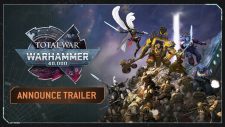

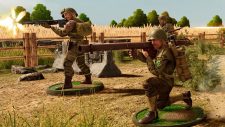






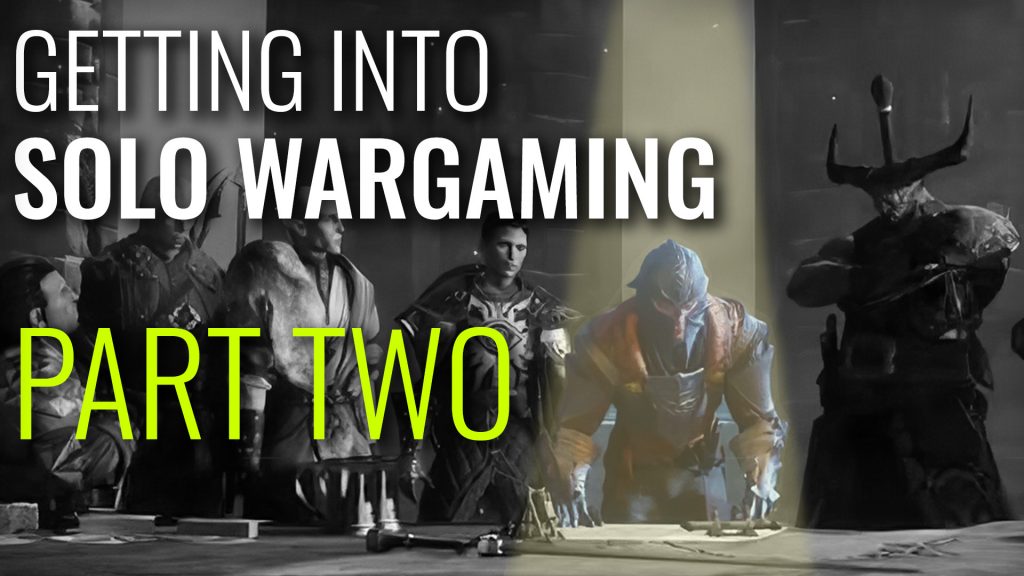

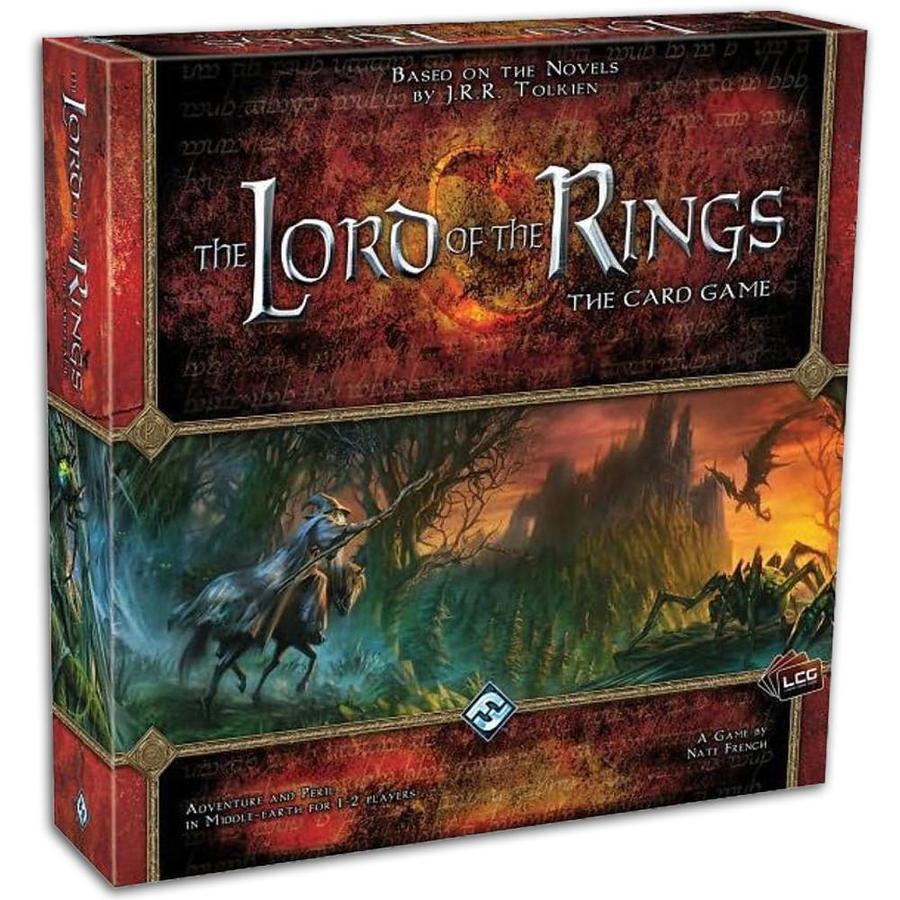




























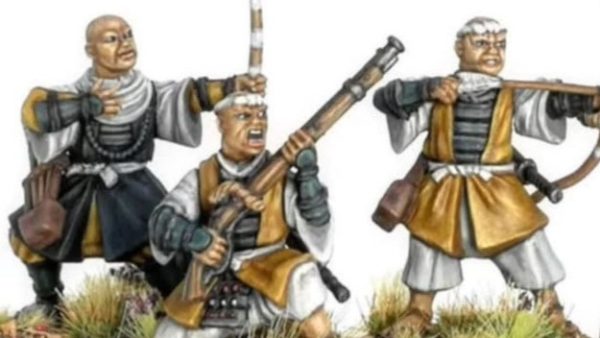
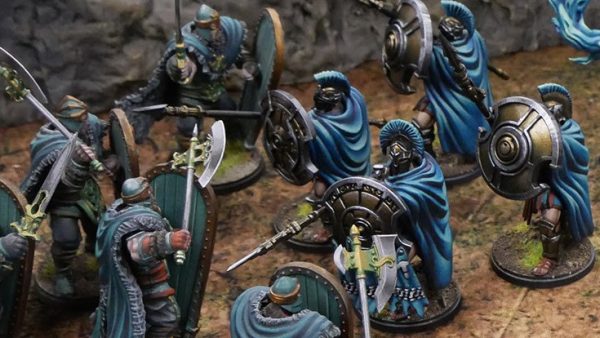

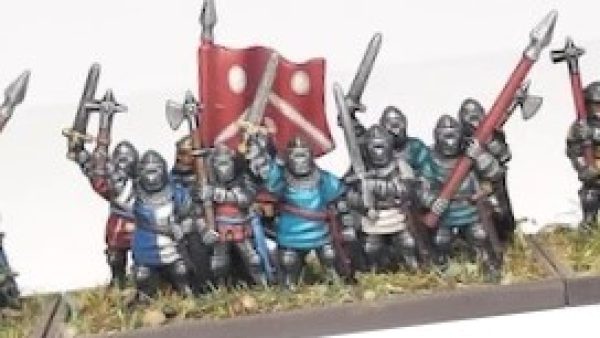





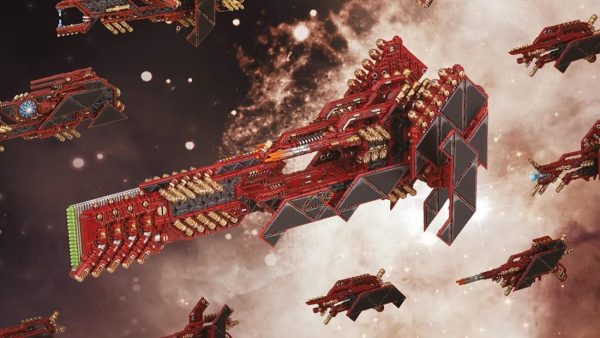


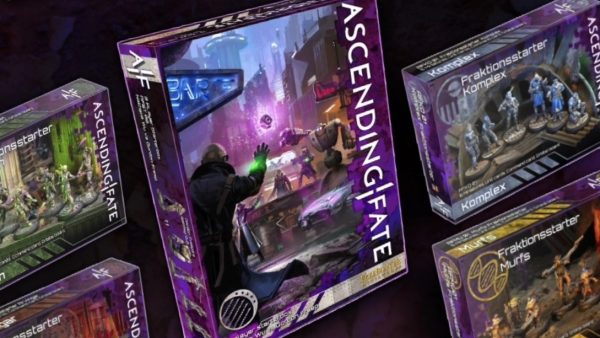




That was great to read. You really thought this out in detail did you. Seems to me like you didn’t miss anything and I do like that you made this as general as possible so that one can use those with any system and any genre they want.
Thanks @mecha82 appreciate the feedback. yes tried to keep things reasonably generic with parts 2 and 3 of the series but regrettably it wasn’t always possible – at some stage the horse and musket era just gets too different from combat between spacefleets and armored mecha. Still, the broad concepts could perhaps hopefully be repurposed as the gaming environment required.
For solo RPG’S Tunnels and Trolls is the one that leaps out of the pack
Thanks for the tip @torros.
The original Warhammer Quest is great for some solo-dungeon delving
Thanks for the suggestion @olliep regrettably I only played it’s little brother, Hero Quest. From what i’ve seen of WHQ though I imagine it would be very entertaining solo.
Yeah the original version was event deck-driven so no need for a 2nd player to be a GM like the new version. Many fun hours spent in those dungeons during the mid-late 90s 🙂
Another excellent article @evilstu. Great read
Cheers @torros
its good for trying new rules/ideas in games but playing against someone is the main reason for playing in the first place I think, a great article.
@zorg agree that gaming against an opponent in a relaxed and social setting will almost always be more fun than a solo game. Regrettably however with time constraints and personal circumstances we’re not all necessarily fortunate enough to be able to get games in as often as we choose. Solo gaming isn’t necessarily going to suit everyone, I was just keen to float the topic as I don’t recall seeing it discussed on the site from a wargaming perspective previously (if I have missed something in the annuls of BoW/OTT history would be grateful if someone could advise). Thanks for taking the time to read the article!
A solo game is better than not playing plus you can always fine tune your tactics on some of your favorite attack move’s and playing both side’s you always win.? Lol
I believe you are trying to hard to justify the solo wargaming experience instead of presenting a balanced view of the different types of solo games available. There are good solo card games and there are good solo board games. A solo RPG is hard but there is at least one that makes the grade.
On the card game side
1. Onirim has been regarded as one of the best solo-able games.
2. One Deck Dungeon
3. Dungeon Roll
4. Space Hulk: Death Angel – The Card Game. Sadly out of print
To name only a few solo card games.
On the board game side:
1. Mage Knight — while it is long, it is one of best solo experiences
2. Robinson Crusoe: Adventures on the Cursed Island
3. This War of Mine — Deeply Thematic and incredibly realistic experience
4. Machina Arcana — Especially with the new edition due this year, a strategic puzzle at its best
For RPG:
Map Maker Adventures — Now on KS for a second edition. It has a narrative you follow from the books. It has puzzles. You make decisions that can impact your future play. It spans 4 very large books. You can play solo or with friends.
I do not disagree on the war game part of the story and you the battle report was a good read, I just believe you hand waved the others. I do not believe solo wargaming is better, it is just one option of many available.
Thank you for starting conversation.
@turbocooler thanks for sharing your perspective. Just a point of clarification – I’m not trying hard to justify anything, I assure you I’m just not that motivated 😛
The idea behind this article series was to explore the idea of solo wargaming as I felt that that was where the greatest opportunity for filling in some of the blanks lay. Additionally, the only board games I have played in the last 25 years have been one offs or games I have played twice. Whilst all enjoyable I do not consider myself familiar enough with board games as a broad classification on how they might be modified to permit solo gameplay. There are many of our learned colleagues in the OTT community who would be much better placed to speak with regard to matters of potentially redesigning competitive board game mechanics for enhancement of solo playability.
Similarly, on the card game front, my only real experience is Munchkin, Star Realms and the wonderful Dominion. Once again I don’t have enough experience to propose mechanisms of redesigning card games for solo play. however I did back the Unbroken KS and am really keen for that one to arrive 🙂
With wargames however I stared off with 2nd edition Battletech in the late 80’s/early 90’s and have been playing various systems reasonably consistently ever since. Wargames, and to a lesser extent, Fantasy and Sci-Fi RPG’s, are where my hobby home lies. Not intending to be dismissive of other game styles, it is simply my preference not to extend opinions where I am not confident of my level or breadth of knowledge and I didn’t believe I had sufficient knowledge to speak with regard to the other broad game classes in greater depth than I had.
Appreciate you taking the time to respond and post the excellent suggestions for solo games for the genres. I’m thinking it might be an idea to kick off a forum post and collate the solo friendly games and ideas. If you do have any suggestions for how card/board/RPG’s could be modified for solo use would be grateful if you could drop your thoughts there so that the rest of the community could share your insights. cheers 🙂
Great article! Lots of options for us to refer back too. I’ll definitely Return to this article for future reference.
Thanks @silverfox8 please let us know if you have any additional suggested options 🙂
Great stuff! I’m currently tinkering with a solo version of HeroQuest. The miniatures and terrain remain the same (with some extras from Mantic’s Terrain Crate) but the rules are pretty far removed from the original. I always prefer to keep things simple and quick, like the original, but with more diversity and flexibility. I guess I should start a project about it, haha.
Sounds great @moji please let us all know how it progresses!
Thank you for this, @evilstu . It is both informative and inspiring. And that WHFB game, great!
I like solo-playing, because thus I can play even if I don´t have a real person to play against. Some games, however, are just difficult or impossible to play alone, like chess (unless you play like the hero in “The Chess Novel”) and other games, where players have to outthink their opponents.
The question is: How can I solo-play games that haven´t been designed for this? I found two stereotypical answers for myself: 1. Use your fluff and turn it into scripts. 2. Think of random effects.
Fluff is what I read and see in rulebooks, supplements, campaign books, history textbooks, marvellous articles by the best history editor in the world, OTT and BoW videos, comics, TV series and more.
Controlling characters in turns is perfect, if those characters are on one side. But if the are not, what do I do? Example: I own the TWD: All ot War Collector´s Edition. It is quite easy to play through the solo-scenarios on offer in the leaflet, with just survivors against walkers. But with opposing survivor groups there are problems. I personally find it difficult to make decisions for each group pretending not to know what the other group has done and planned.
So I used my fluff. I chose one of the groups and wrote a script what they might do under certain circumstances. The leader: Does he shoot first and ask later? On what dice roll is he ready to join your Group (Success on a red die in case of an agrressive, negative character)? Does he even endanger his own comrades? And so on. I did the same with all the other members of the enemy group.
Then I could continue playing and could concentrate upon one side, what I find easier than the mental side-changing.
Scripting is just the same like what @evilstu did with the archers (Orders: Alternative System). It is up to your taste how far you carry this. Take for instance orcs in 40k. You can write a script for orcs in general or a script for each troop type, as detailed as you imagine fit.
Any game with strong narrative is very well suited to write scripts. The orcs in WHFB are a colourful faction and many things they do, if not all, are ruled by how they are. Somehow they kind of play themselves. They will always prefer to advance to reach close combat, their bosses will (always?) challenge opposing character models and much more. It should be nice to write a script for this. Should I run out of ideas I´d grab an army book/battletome and there I am. I can even write special scripts for characters with a name.
The same goes for historical games and also for single historical characters For instance, the Roman leader with the nickname “Cunctator” is likely to take neither quick, nor risky actions. General McClellan in the ACW will be much more careful and risk-averse than General Sherman.
Random effects give spice to both solo games and games with human opponents, for example:
Unit activation: Use a normal card deck and assign one card to each unit for both sides. Shuffle, then upside down, turn a card and off you go. You don´t know which unit will act next.
Variable turn length: You can use a chess clock. You´ll see how different a game plays if you´re under pressure 🙂 , both single and non-single.
I have little to add to what @evilstu wrote on objectives. My personal favourite scenarios with objectives are from battle reports from BoW/OTT. One was from a “Let´s Play Bolt Action”, when two parties had to collect important information from a destroyed German recce vehicle, a briefcase with battle-plans and General Model´s cigars. The briefcase had to be carried over the “own” table edge to secure it.
The other one was a bridge the Germans tried to destroy with V1 missiles from afar to prevent the Allies to bring reinforcements over the river. Great battle report that was!
Last thing I try to include in my solo games, particularly the historical games in WW II, can be summarized under “Something´s going wrong”. This is a fun part. With every action of a unit I draw a card that describes event(s) that affect the unit for this turn or maybe even longer. I make up the cards by myself.
The basic card is “All clear”, the unit may act as desired.
Examples for event cards are: MG is jammed: Don´t fire once. Desorientated: Shoot at closest friendly unit once. And so on.
I use the community at OTT as best I can to enhance my solo experience. An article like @evilstu ´s certainly is one for this. Furthermore I suggest a kind of forum on OTT for solo-playing in which members can submit ideas, scenarios, methods etc.. For instance, we could have people making up event cards for specific games, scripts for certain factions etc.
Looking forward to the next episode of this series. Sorry it took me so long to respond.
@jemmy thanks so much for taking the time and sharing your ideas and tips 🙂 the ‘something’s gone wrong’ deck in particular seems like a really fun mechanic. I’ve put up a thread in the forums that might be a suitable starting point to try and collate some ideas and game suggestions, link follows:
https://www.beastsofwar.com/forums/topic/solo-gaming-resources/
Awesome solo-gaming suggestions @jemmy – thank you!
Gaunt’s Ghosts fans could rename the “Something’s gone wrong” deck as the “Something’s awry” deck.
The Bolt Action activation dice bag mechanic would appear to be useful for solo-wargaming. I remember @warzan Talking about using is to play 40k.
I’ve had several enjoyable games using Josh Malbon’s Tactical AI deck as an opposition AI for both skirmish and platoon and company-level games. The enemy can Patrol or Attack, with random determinations of how the Patrol or Attack is performed, in what direction, and how far. The deck also includes objective markers. Despite the random variation, it’s worked out well for me so that the enemy acts in a coherent manner, if not always for the best tactical advantage.
@neal5x5 thanks for the tip re Hostile Tactical AI – will need to see if I can track down a copy. Nice that there are 2 orders per card to mix things up as well.
That was a great read, many thanks evilstu still reading! Missed part1, just joined will check-it-out! Solo I love! Hard to get time with opponents re timing, however in saying that back in 2003 & later I was a play-tester way back…for Lock ‘n Load Publishing. (used Vassal to playtest etc, the online way to play thru your browser) Anyways some of the games, & these all play solo really well with great narratives!
Games were: Lock ‘n Load: Forgotten Heroes – Vietnam (2003) Lock ‘n Load: Band of Heroes (2005) Lock ‘n Load Tactical: Day of Heroes (2008) No I do not work for the company, but I did get free games after finishing play-testing! Woo hoo! games I’ve played over the years…
Raid on St. Nazaire, Up Front, Ranger, a game with a laminated map & grease pencil! Chainsaw Warrior, Platoon, Hero Quest, Battlecry, Space Hulk, Ambush RAF…u get the idea & also 25mm Vikings, WW1 &2, 2mm gaming, looks amazing with the puffs of gun-smoke drifting across the battlefield…yeah…
Thanks @mike Mirfin and welcome to the OTT community!
Cheers, thanks great to be here!